Space Force: What will the new military branch actually do? – Space.com
The Trump administration established the Space Force as a separate military branch in December 2019.
Since then, America’s Space Force has gotten its own official “Star Trek”-esque seal, with a logo being developed. Recently unveiled was a traditional camouflage uniform adorned with a blue “U.S. Space Force” nameplate on the chest and a full-color flag on the left arm.
Furthermore, the first official “space guy” has been formally sworn in. Gen. John “Jay” Raymond is the Space Force’s first chief of space operations and has said that the new branch will be a “technology-focused service.”
Related: What is the Space Force?
Sparking all of this activity are the increasing space ambitions and capabilities of multiple countries, especially China and Russia, U.S. officials have said. The Space Force is designed to help protect the interests of the United States in space, deter aggression in the final frontier and conduct prompt and sustained space operations.
As U.S. Secretary of Defense Mark Esper noted last month, nations have been in space for many, many years. “It’s just been recently that both China and Russia pushed us to the point where it now became a warfighting domain,” Esper said during a Jan. 27 news conference.
As a result, Esper said, the United States has established the Space Command and just recently, Space Force, “to make sure that we can preserve space as a global commons,” he stressed. “It’s important not just to our security, but to our commerce, our way of life, our understanding of the planet, weather, you name it. So it’s very important that we — we now treat it that way and make sure that we’re prepared to defend ourselves and preserve space.”
What next for the Space Force?
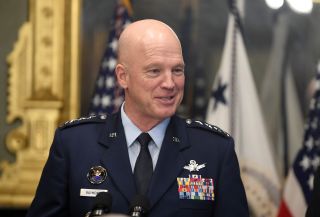
Space.com asked a variety of experts in space policy about the practicalities, pathways and potential pitfalls ahead for the U.S. Space Force.
“Congress took a seemingly flippant remark and created a rational implementation plan, a Space Force to support Space Command,” said Joan Johnson-Freese, a professor of National Security Affairs at the Naval War College in Newport, Rhode Island, referring to a comment President Donald Trump made during a speech in March 2018. (Her views do not necessarily represent those of the Naval War College, the Department of Defense or the U.S. government.)
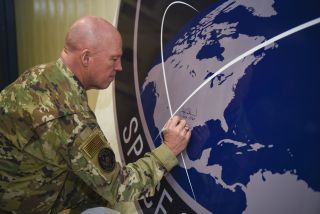
“Whether it will evolve into an organization that solves any of the problems that prompted it remains to be seen,” Johnson-Freese told Space.com. “On the negative side, it certainly increases the perception that the U.S. is leading the way on the weaponization of space.”
Related: Military space: Spacecraft, weapons and tech
Uniforms and patches
Theresa Hitchens is the space and air reporter at the online magazine Breaking Defense and a former senior research associate at the University of Maryland’s Center for International and Security Studies. Before that, she spent six years in Geneva as director of the United Nations Institute for Disarmament Research.
Hitchens said there are two big questions at hand regarding the Space Force.
The first is whether and how the Department of Defense (DoD) and the Air Force are going to implement the spirit — and not just the letter — of the congressional mandate in the 2020 National Defense Authorization Act on space acquisition, which created a new position and moved the Space Development Agency to Space Force.
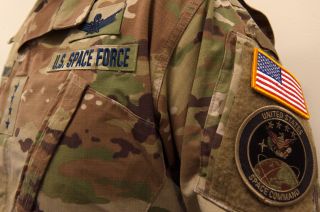
Established in March of last year, the Space Development Agency is tasked, in part, with accelerating the fielding of new military space capabilities necessary to ensure U.S. technological and military advantages in space.
“Right now, it looks like DoD wants to slow-roll those changes, perhaps in hopes of convincing Congress to cut them some slack,” Hitchens said.
The other question raised by Hitchens concerns whether Congress will allow or force other services to contribute personnel to the Space Force. “Or are we talking simply about a renaming of Air Force Space Command where nothing changes except the uniforms and patches, wasting taxpayer dollars?” Hitchens said.
Bureaucratic reshuffling
“At best, a space force is a distraction from what is necessary to ensure security in the face of rapid technological and geopolitical changes. At worst, it would prompt a space arms race that would threaten satellites, not protect them. Diplomacy, not bureaucratic reorganization, is urgently needed,” said Laura Grego, a senior scientist in the Global Security Program of the Union of Concerned Scientists in Cambridge, Massachusetts.
Grego told Space.com that she thinks it may be easy to dismiss the Space Force as a vanity project because of the name.
“It still is mostly a bureaucratic reshuffling, without a big budget or increase in personnel. But it also organizes military space around deterring and responding to aggression,” Grego said.
“Using that framework, there is a bureaucratic incentive to hype the threat and then build weapons to counter that threat,” she added. “There is no commensurate effort from the State Department to shape the space environment to be more stable and peaceful, which would certainly benefit both military and civil space users.”
Related: The most dangerous space weapons ever
Adults in the room
“The existence of a Space Force implies the potential use of force in space or from space. Creating one implies commitment to having the ability to use force in or from space. That is, to having space weapons,” said Mark Gubrud, a physicist and adjunct professor in Peace, War and Defense at the University of North Carolina.
Gubrud said that the rollout of the Space Force has been accompanied by all sorts of talk about the armed defense of future asteroid-mining operations, moon bases and sundry fantasies.
“Some of this comes from officials, including the U.S. vice president,” he said. “Even if the adults in the room understand this is mainly about satellites, everybody assumes that a Space Force is going to be an armed force. To suggest otherwise would get you laughed out of the room.”
Arms control
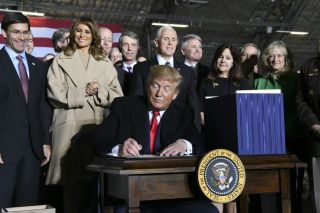
The United States has not sought space arms control since the administration of President Jimmy Carter, Gubrud said. In the meantime, the U.S., China and Russia have been drifting toward a space arms race, because even unarmed satellites participate in military surveillance, targeting, communications and other war-fighting functions.
“The question is, will we continue this course toward destabilization and nuclear war,” Gubrud said, “or will we renew our pursuit of arms control, disarmament, and the vision of a world free from this terrible danger?
“I call for renewed advocacy of space arms control: No war in space. No weapons in space. No weapons aimed at space. We need a global convention that says that,” Gubrud concluded.
Underlying factors
The Secure World Foundation (SWF), a prominent group dedicated to the peaceful and sustainable use of outer space, has not taken any positions that are either for or against the Space Force. Instead, the SWF draws attention to the underlying factors in the Space Force debate as they pertain to the stability of the space environment and the safety and sustainability of space activities, on which the world is becoming increasingly reliant.
According to Peter Martinez, executive director of the Colorado-based SWF, many of the discussions around the Space Force reinforce an image of space as a military domain and a potential arena of military conflict.
“However, space is already a domain dominated by civilian and commercial actors,” Martinez said, “so the new space race is really not so much a race among military rivals as it is a race among civilian commercial rivals to access an increasingly congested and contested domain, and we need to think about what this means for safety, security and stability in space, for all actors, both military and civilian.”
Counterspace developments
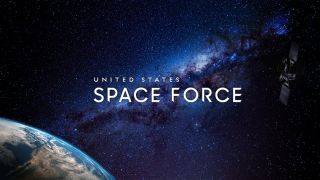
Martinez said that the Space Force developments have also been taking place against a backdrop of increasing proliferation of “counterspace” activities.
These counterspace developments are sometimes described using rhetoric that exaggerates their importance, Martinez said, and leads to a narrative of the “inevitability” of armed conflict in outer space that could become a sort of self-fulfilling prophecy fueled by misperceptions, misunderstandings and mistrust.
Furthermore, counterspace development also involves debris-producing anti-satellite tests and is “a cause for great concern to all users of space systems, and should be strongly discouraged,” Martinez said.
“There has been a lot of mixed messaging around the Space Force, partly because things are not internally decided within the U.S., and also because the proponents of various viewpoints have been quite forceful in expressing their views, leading to confusion among observers outside the U.S. as to what is actually happening,” Martinez said.
Rules of engagement
The Space Force debate was initially about whether to establish the new branch at all, Martinez said.
“Now that the decision has been taken to do so, the debate is more about what such a Space Force would look like,” Martinez told Space.com. “To date, what we have seen is mostly a reorganization of already existing activities, with nothing fundamentally new or additional. It remains to be seen how this Space Force will develop in future and what its rules of engagement will be.”
“Of course, we would much prefer to see space preserved as a domain for peaceful use and exploration, for the benefit of all nations. Indeed, space is one of the few areas of human endeavor that brings us all together, and we should strive to preserve that characteristic,” Martinez said.
One possible positive outcome of discussions about the Space Force, Martinez continued, is that they could ultimately help to provide more clarity on U.S. intentions in space and lead to more consistent international messaging about America’s position and views on military uses of outer space.
“But this will only happen if these developments are complemented by diplomatic efforts to communicate these messages to the international community to avoid mistrust based on misperceptions and misunderstandings of U.S. intentions in outer space,” Martinez concluded.
You can learn more about the U.S. Space Force at the organization’s official website.
Leonard David is the author of the recently released book, “Moon Rush: The New Space Race,” published by National Geographic in May 2019. A longtime writer for Space.com, David has been reporting on the space industry for more than five decades. Follow us on Twitter @Spacedotcom or Facebook.







